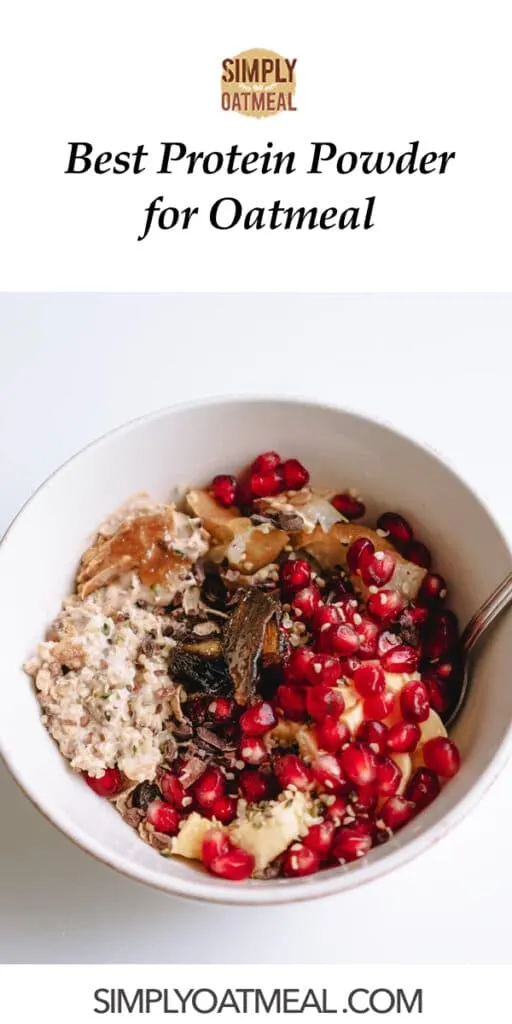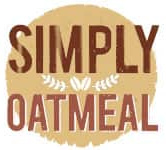If you are a bodybuilding enthusiast, you will probably hear others talking about bulking up on protein for muscle growth and repair. Protein powder is a nutritional supplement that is commonly consumed in shakes, but did you know that you can add protein powder to oatmeal?
What is the best protein powder to add to oatmeal? Whey protein dissolves into liquid better. However, soy protein is a vegan alternative that is free of any animal by-products.
Protein powder has gained significant popularity, especially as a nutritional supplement, and is readily available in almost all supermarkets. You can also find pre-mixed and ready-to-drink protein shakes available in many beverage retailers.
But the big question remains unanswered – is protein powder only meant for shakes, or can you also add it to your oatmeal recipes? Protein powder is not only for bodybuilders and professional athletes, so let’s explore more info about adding the supplement boost to your breakfast oatmeal porridge.
What is protein powder?
Protein is a necessary nutritional element that helps in building muscles, repairing tissues, and also in making essential hormones and enzymes. They are also used in aiding weight loss and helping in muscle toning.
Protein powder is a nutritional supplement that is available in different forms, commonly they are whey, casein, and soy protein. Out of these 3 forms, the most popular and commonly used is whey protein since it is water-soluble and milk protein-based.
Since it is a complete protein, it has all the benefits and nutrients, i.e. all 9 amino acids essential for dietary needs. Those who are vegan may switch to soy protein, however, it has an unpleasant chalky taste and does not completely dissolve in water.
How is whey protein powder made?
In simple words, whey protein powder is a by-product that results from the cheese-making industry. If you are consuming whey protein, you must know that it is made from cow’s milk.
Naturally, cow’s milk contains 2 types of proteins, whey, and casein, in the following ratio – 2 parts whey and 8 parts casein.
When cheese is made, the heated milk kills unwanted bacteria and the high temperature divides the milk into liquid whey and curd.
Of course, the first step involves milking the cow. After collecting raw milk, it is cooled down to four degrees Celsius.
Next, the milk is pasteurized to a temperature of 72 degrees and again let it cool. After the cheese processing is complete, the whey is drained off and the WPC or whey protein concentrate is dried to make whey protein powder.
How is soy protein made?
Soy protein is a by-product from defatted soybean flakes that are a by-product of oil extraction. The water-soluble sugars are then removed from the defatted soybeans.
After the water-soluble carbohydrates have been removed, the resulting soy protein is left behind. The concentrate consists of 70% protein with some insoluble fiber, which is the reason why it does not dissolve very well in liquid.
Is protein powder healthy?
Just like there are two sides to every coin, there are both health benefits as well as possible dangers of consuming protein powder.
The benefits of consuming protein powder include:
- Helping in losing weight. In a study from Nutrition and Metabolism, it was observed that whey protein powder consumption helps in significant loss of body fat.
- Anti-cancerous. There have been promising results according to Anticancer Research where whey protein is used in cancer treatments. However, more intensive research is still required on this subject matter.
- Reducing cholesterol. There has been a substantial decrease in LDL and total cholesterol in studies with people who have high cholesterol.
Other benefits include reducing blood pressure and decreasing the risk of cardiovascular diseases.
However, there are shortcomings too.
Some side effects of consuming protein powder include:
- People who are lactose intolerant may be allergic to whey protein.
- If consumed in high doses, it may cause nausea, reduced appetite, stomach aches, cramps, fatigue, and headaches.
- May also lead to acne problems.
How to add protein powder to oatmeal
There is no one way of adding protein powder to oatmeal. You can try out as many recipes as you want, but when it comes to the mix-ins and oatmeal toppings it’s best to stick with personal preference.
To give you a head start – Start by selecting your favorite type of oatmeal. You can go for rolled oats, gluten-free oats, instant oats or steel-cut oats, choose whichever oats you prefer the most.
Cook it according to the instructions provided in water, coconut milk, almond milk, etc., and add a bit of salt while preparing. Once it is nicely cooked, and while it is still hot, add protein powder depending on the quantity of oatmeal you are taking.
Do not add the powder when the oatmeal is cold, this is not helpful for stirring and dissolving the powder. You will end up with chunks of powder that have not fully combined with the mixture.
Toppings are the best way to add protein to oatmeal.
Top it off with some fresh fruits, dry fruits, and nuts to make it interesting. You can add mixed berries, chopped nuts, and yogurt, or try almond butter or peanut butter if you want it to be extra creamy.
Oatmeal and Protein Powder for Weight Loss
Oatmeal is rich in essential nutrients and it is not very expensive, especially compared to other dietary foods. The recipes are endlessly customizable, which is why oatmeal is preferred by those who are willing to reduce weight.
They make a staple breakfast, snack, or healthy dinner for many, and it does not really matter whether you consume then cooked or raw.
Oatmeals are rich in fiber and healthy carbs. However, consuming only carbs and fiber is not going to be sufficient for the normal functioning of the body.
For this reason, adding a few teaspoons of protein powder to your oatmeal makes it wholesome. Protein is an important component of a balanced diet and should not be avoided.
However, one important point that you must keep in mind is that you should avoid using extra sugary and fatty toppings on your oatmeal, most notably if you are aiming for weight loss.
Best Protein Flavor for Oatmeal
There are over 50 protein flavors available in the market today for oatmeal. And the top flavors have been mentioned here for you to try and make your everyday meal interesting.
Best protein powder flavors to mix with oatmeal:
- Summer fruits
- Chocolate brownie
- Natural strawberry
- Vanilla
- Raspberry and vanilla
- Chocolate coconut
- Chocolate mint
- Unflavored
- Banana
- Cookies and cream
- Peanut butter cookie
- Salted Caramel
- Mocha
- Cinnamon Roll

What is the best protein powder?
Since protein powder is gaining incessant popularity, the variety of protein powders and brands is increasing too. Below are a few protein powders that have been tagged as the best protein powders on the market today.
- Myprotein Pro THE Whey+
- Naked Whey Grass Fed Whey Protein Powder
- Optimum Nutrition Gold Standard
- Vega Essentials Protein Powder
- SiS REGO Rapid Recovery+
- Myprotein Clear Whey Isolate
- Body Fortress Whey Protein Powder
Final Thoughts
Even in this fast-moving world, people are giving significant attention to their health conditions. A balanced diet is the most important factor in their journey.
While oatmeals are fibrous and have complex carbs, they remain and insufficient source of protein. A balanced diet should also include good amounts of protein and very few fatty components.
Hence, adding protein powder to your oatmeal makes it quite wholesome, helps in reducing weight, and also fights against cholesterol and cancer.
Try to make your oatmeal interesting by adding fresh fruits or dry fruits as toppings while avoiding sugary and fatty ones. You can have it all for breakfast or even as an evening snack.
You May Also Like
- Overnight Oats with Oat Milk
- Overnight Oats with Chia Seeds
- Almond Milk Overnight Oats
- Overnight Oats with Protein Powder
- Overnight Oats with Water
If you enjoyed this post about the best protein powder for overnight oats, please leave a comment!
